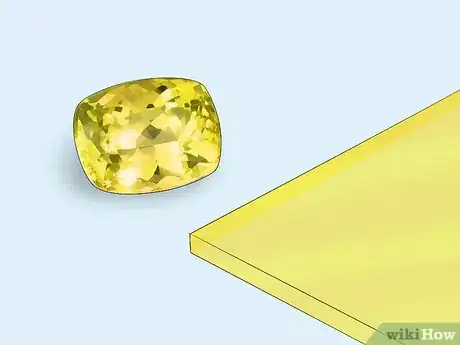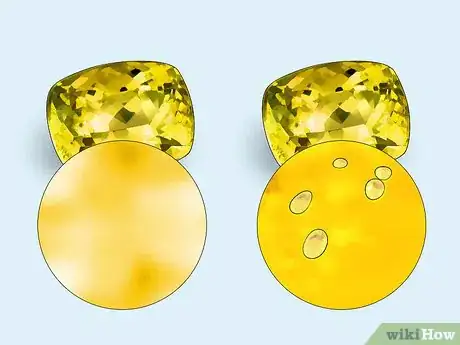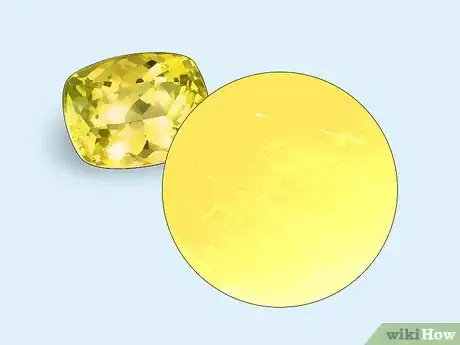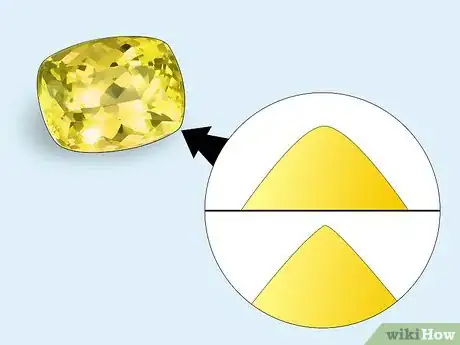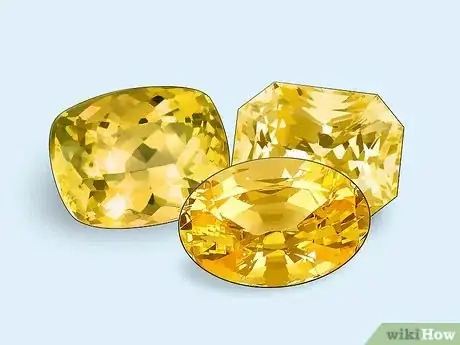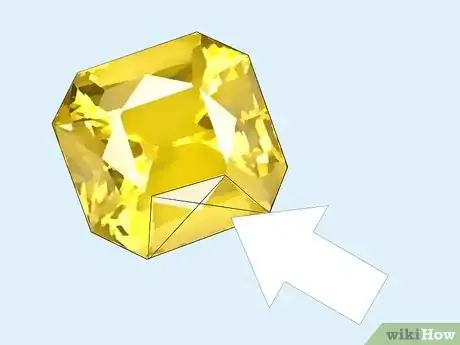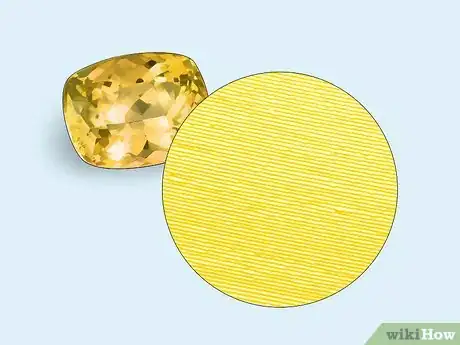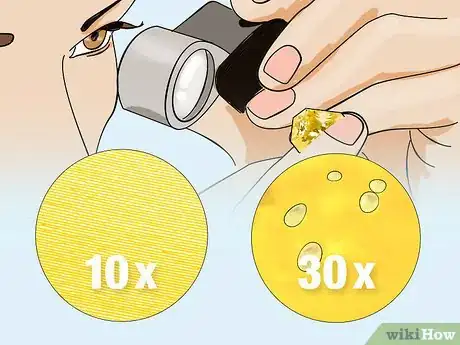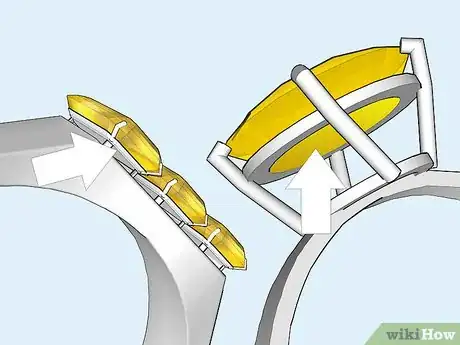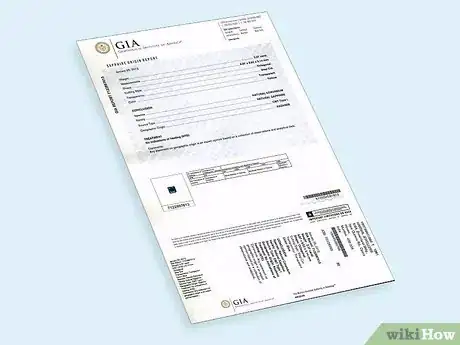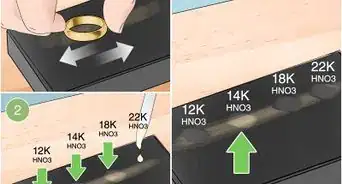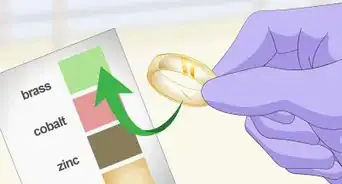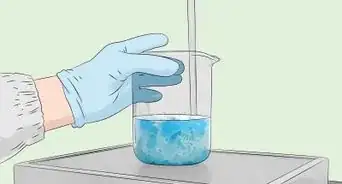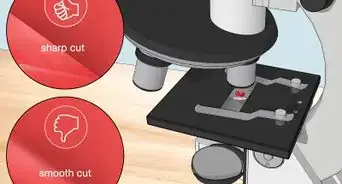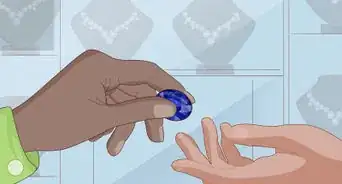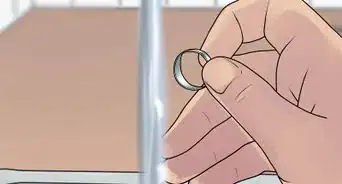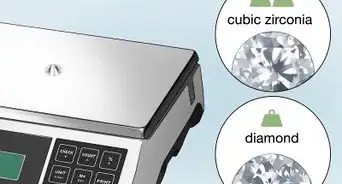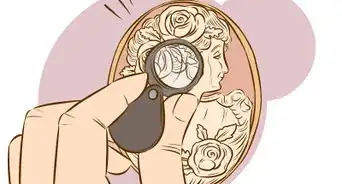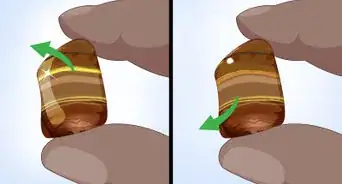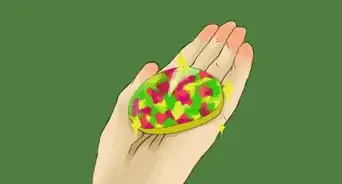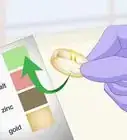wikiHow is a “wiki,” similar to Wikipedia, which means that many of our articles are co-written by multiple authors. To create this article, 18 people, some anonymous, worked to edit and improve it over time.
wikiHow marks an article as reader-approved once it receives enough positive feedback. In this case, several readers have written to tell us that this article was helpful to them, earning it our reader-approved status.
This article has been viewed 365,761 times.
Learn more...
While not as common or prized as its blue counterpart, yellow sapphire is a beautiful precious gem that makes a lovely addition to your jewelry collection. The stone also has special significance to Hindu or Vedic astrology. Regardless of why you choose a yellow sapphire, though, knowing how to check the stone to make sure that it is real, natural, and relatively flawless is an important step you should consider taking before making a purchase.
Steps
Identifying Fakes
-
1Compare the yellow sapphire with a piece of yellow glass. Most fake sapphires are made from glass. While yellow glass may look similar to yellow sapphire at a glance, the two are drastically different when compared with one another. In general, yellow glass is too big and too colorful to be real.
-
2Look for tiny bubbles. Sapphires can have several interior inclusions, but yellow sapphires with no inclusions that are visible to the naked eye will be more expensive. Fake sapphires, on the other hand, often have tiny bubbles inside.[1]Advertisement
-
3Check for scratches. Sapphire of any color is extremely hard. Diamond is the hardest gemstone, ranking a 10 on the Moh's scale of mineral hardness, and sapphire ranks at 9.0 on the same scale. As such, very few materials can scratch a sapphire. Glass, on the other hand, ranks between 5.5 and 6.0 and is scratched much more easily. A glass imitation of yellow sapphire often has lots of surface scratches, while real sapphire has very few, if any.[2]
-
4Note the facets. Since glass is not as hard as sapphire, it is cut much more easily. Yellow glass stones are cut quite simply and usually have smooth, rounded edges. On the other hand, yellow sapphires have more complex cuts that are sharp and crisp.[3]
Identifying Synthetics
-
1Take note of the cut. On a small scale, natural yellow sapphires can be cut into nearly any style. Once stones get larger than one carat, however, many jewelers tend to prefer cutting sapphires into oval or cushion mixed cut. Since round and emerald cuts are more popular, however, jewelers often cut synthetic stones into round and emerald shapes. Natural sapphires can, in theory, be cut into the same shapes, but it is much less likely.
-
2Stay away from "X" cuts. Manufacturers of synthetic stones often place an "X" cut, also called a scissors cut, on the facets of a stone.[4]
-
3Avoid "grooves." Occasionally, the facets of synthetic stones do not come out as crisp as the facets of a natural sapphire would. This flaw looks very similar to the grooves one might expect to see on a vinyl record, but they can usually be seen only under magnification of a 10x loupe.
-
4Check the stone under magnification. A good synthetic may have flaws that are only visible under 10x to 30x magnification. Low, 10x magnification can usually identify the curved, grooved banding found in synthetic sapphires, especially when the examiner places a piece of translucent glass in between the stone and the light source. Higher 30x magnification can identify gas bubbles and masses of powder that has not melted.[5]
Identifying Other Cheats
-
1Watch out for fillings. Like any stone, yellow sapphire occasionally contains inclusions and negative space inside the stone. When a gem-cutter slices into one of these imperfections, a small hole can develop. Most jewelers prefer to keep the hole in the gem rather than cut it away, but untrustworthy jewelers sometimes fill the stone with glass or borax paste to add weight and make the stone appear higher quality. Examine the stone by shining a light on it. Patches of unevenness are usually a good indication of this practice.[6]
-
2Be aware of foil backed stones. Foil backing reflects more light, making the color of the yellow sapphire look more vibrant and the luster of the gem look brighter. The backing can be hard to see if the stone is already fitted into a setting, but careful examination of the base of the stone under magnification can often reveal a foil backing. Moreover, this potential falsification is more commonly found in antique jewelry, meaning that you may not need to worry about it quite as much if purchasing a new piece.
-
3Keep setting in mind. If you have any doubts about the seller you plan to buy from, consider buying loose stones or stones with settings that give you a look at the bottom of the stone. Claw, tension, and channel settings are good examples. On the other hand, closed settings, like the bezel mounting, are often used by scammers to hide flaws and evidence of fraudulence.
-
4Note the color. True yellow sapphire is a pure yellow, but similar, less precious imitations often have slightly different hues. Citrine has a slight green tint, golden topaz has strong traces of orange, and yellow tourmaline has a brighter, lemon-like hue.[7]
-
5Look for a certificate. While a certificate does not give you the same assurance that physically checking the stone might, it does provide you with the satisfaction of knowing that the stone was checked and approved by an official, trusted organization.[8] Look for certificates from national gem societies like the Gemological Institute of America or the American Gem Society.
Community Q&A
-
QuestionWhat else could a yellow stone be?
 Community AnswerIt could be citrine, but it could be opal or amber.
Community AnswerIt could be citrine, but it could be opal or amber. -
QuestionThere are yellow sapphires for sale on Amazon.in. I have purchased 7.25 ct for $22, will it be fake?
 JamegueniCommunity AnswerDefinitely fake, a real sapphire would be worth around $2000 for 1.08 ct.
JamegueniCommunity AnswerDefinitely fake, a real sapphire would be worth around $2000 for 1.08 ct. -
QuestionWhat is the value of a yellow sapphire?
 Community AnswerDepending on the size of the sapphire the value varies, but a 0.58 ct is worth $1,000.00.
Community AnswerDepending on the size of the sapphire the value varies, but a 0.58 ct is worth $1,000.00.
Things You’ll Need
- Loupe or other magnifier
Expert Interview
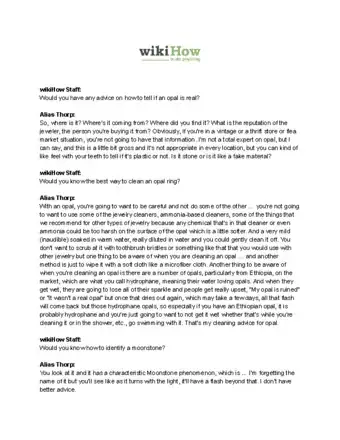
Thanks for reading our article! If you'd like to learn more about identifying gemstones, check out our in-depth interview with Alisa Thorp.
References
- ↑ https://www.slideshare.net/dashrathseo/5-ways-to-check-yellow-sapphire-pukhraj
- ↑ https://northtwentytwo.com/journal-sapphire-vs-mineral/
- ↑ https://www.slideshare.net/dashrathseo/5-ways-to-check-yellow-sapphire-pukhraj
- ↑ https://www.lapigems.com/blog/post/Celebrating-Yellow-Sapphire-e28093-The-September-Birthstone
- ↑ https://www.lapigems.com/blog/post/Celebrating-Yellow-Sapphire-e28093-The-September-Birthstone
- ↑ https://www.lapigems.com/blog/post/Celebrating-Yellow-Sapphire-e28093-The-September-Birthstone
- ↑ http://blog.jewelsutra.com/2012/03/how-to-identify-yellow-sapphire.html
- ↑ https://www.jewelryshoppingguide.com/how-to-tell-if-a-sapphire-is-real/
About This Article
Yellow sapphire is a beautiful precious gem, but before buying one make sure it’s real, natural, and relatively flawless. Most fake sapphires are made of glass, which gives it a large, too colorful appearance with smooth, rounded edges. If you see tiny bubbles or scratches, this is another sign that you’re looking at a fake. In addition to glass, some gems are replaced with synthetic materials, so beware of “X” cuts on the facets of the stone, which typically indicates it isn’t a real gem. Since a true yellow sapphire is a pure yellow, watch for similar but less precious imitations, which often have a different hue, like a green or orange tint. To learn how to read a certificate from a national gem society to verify that your yellow sapphire is real, keep reading!
